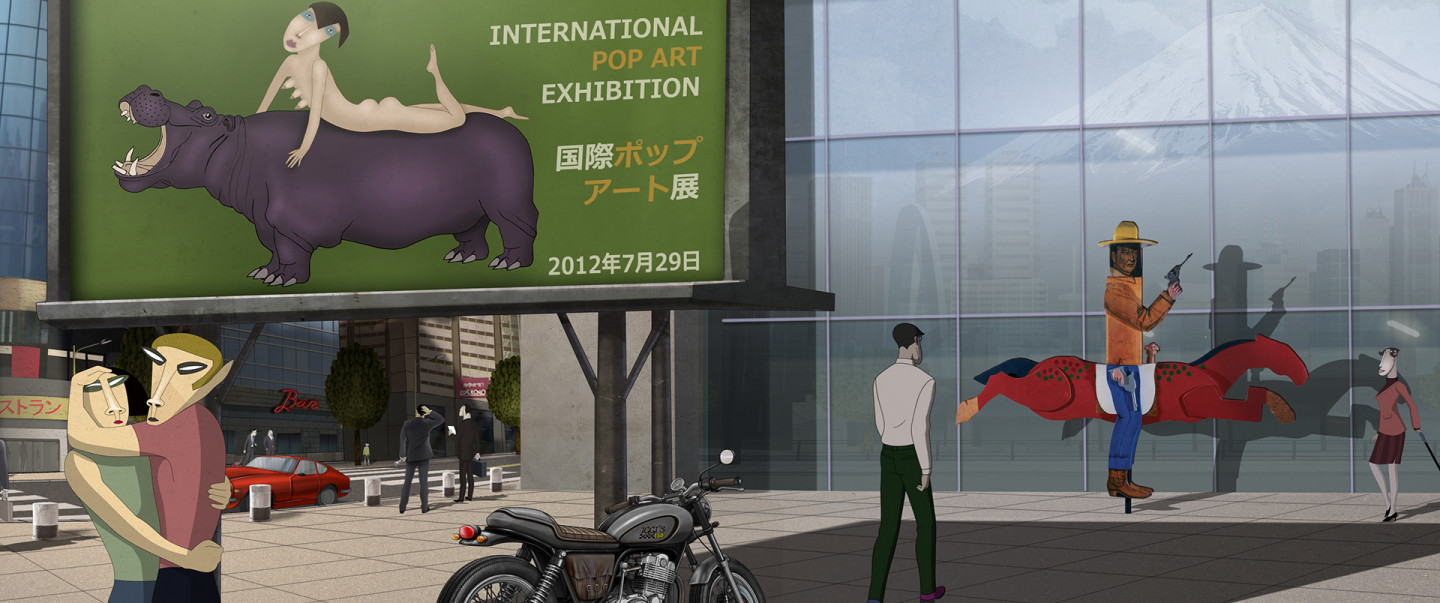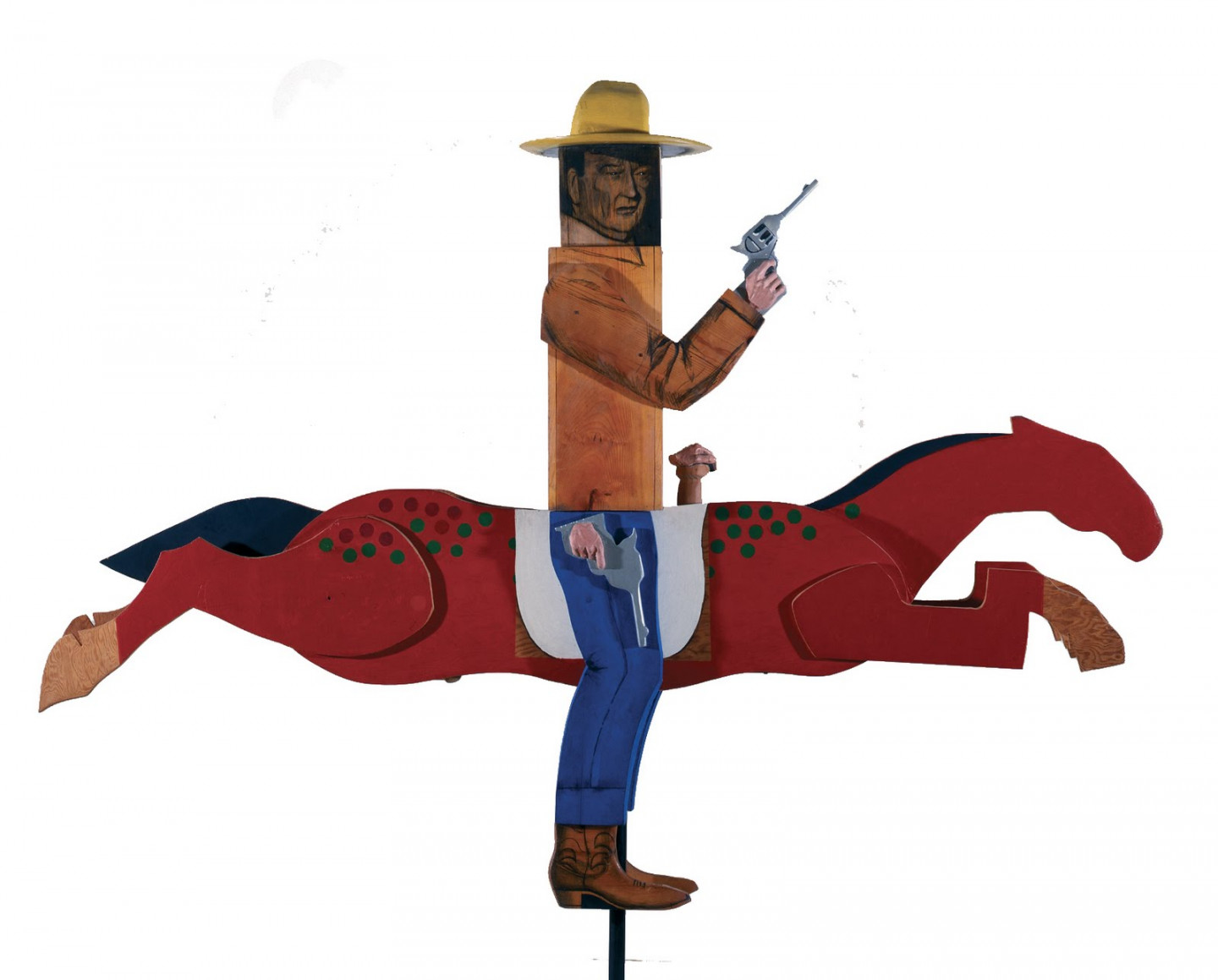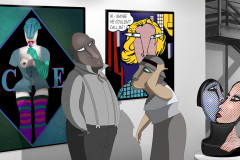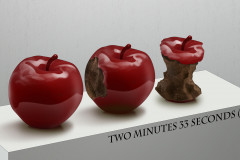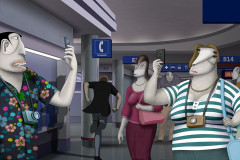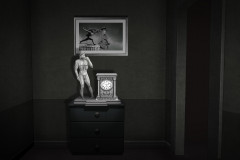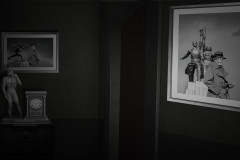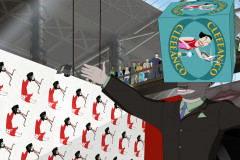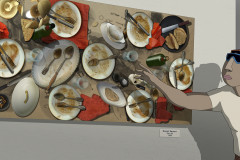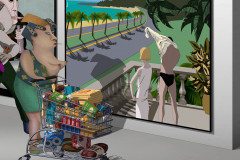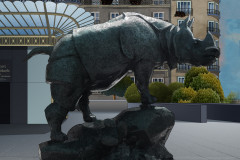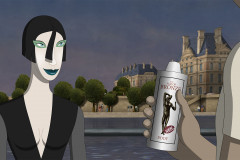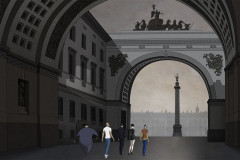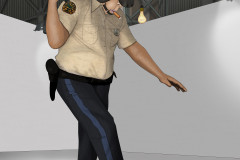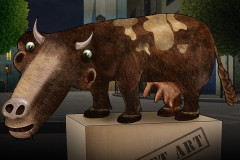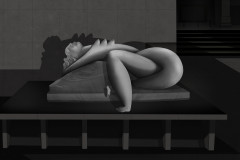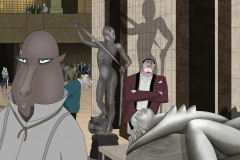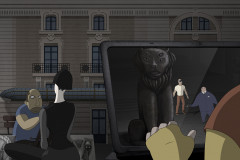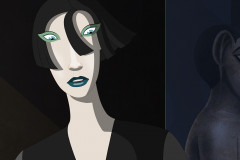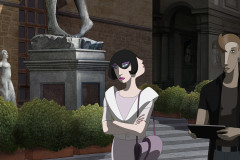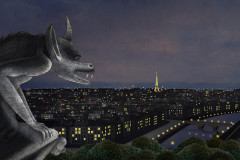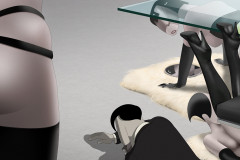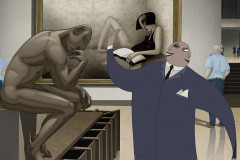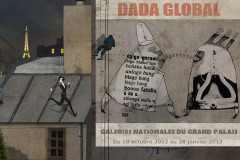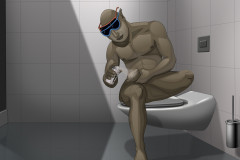Escobar, Marisol (1930-2016): John Wayne, 1963 (fa, vegyes technika; Colorado Springs Fine Arts Center). A New Yorkban alkotó, venezuelai származású szobrásznő az amerikai pop-art kevés női alkotóinak egyike volt. Az 1940-es évektől a '70-es évekig legendás western- és háborús hősöket alakító John Wayne pedig az amerikai férfi-ideál. Marisol őt ábrázoló „lovasszobra” a filmben a tokiói pop-art-kiállítás épülete előtt fogadja a látogatókat.
A lovasszobor a művészettörténetben hagyományosan a legkiválóbb férfiúknak – hadvezéreknek, császároknak, királyoknak – kijáró reprezentatív műfaj. A pop-art azonban sokszor viccet csinál a „magasművészet” értékeiből, s helyükre a köznapi élet használati tárgyait, anyagait emeli, felmagasztosítva azokat. Marisol különösen híres volt ironikus, már-már paródia-számba menő ábrázolásairól, melyekben újságfotók portréit egyesíti hulladékanyagokból, faelemekből összeállított, festett, ragasztott, egyszerűsített „testekkel”. John Wayne „száguldó” lovának szinte vízszintes testtartása, a lovas függőleges tengelybe rendezése inkább egy vásári körhinta lovasát vagy egy pálcikára ragasztott kétdimenziós, szélkakasszerű bábot juttat eszünkbe, ezzel téve nevetségessé a férfias hős mítoszát.
Escobar, Marisol (1930–2016): John Wayne, 1963 (wood, mixed media; Colorado Springs Fine Arts Center). The Venezuelan-born sculptor, active in New York, was one of the few prominent women in American pop art. John Wayne, legendary for his roles as a Western and war hero from the 1940s to the 1970s, embodied the American masculine ideal. In the film, Marisol’s “equestrian statue” of him greets visitors outside the building of the Tokyo pop art exhibition.
In art history, the equestrian statue has traditionally been reserved for the most celebrated men—generals, emperors, kings—a grand and symbolic genre. Pop art, however, often satirizes the values of “high art,” replacing its noble themes and materials with the everyday, elevating the banal in the process. Marisol became well known for her ironic, almost parodic portrayals, in which she combined photographic portraits with painted, glued, and simplified “bodies” built from wooden scraps and found materials. Her John Wayne features a galloping horse in a near-horizontal pose, while the rider is fixed on a vertical axis—more reminiscent of a carousel figure or a flat, weathervane-like puppet than a triumphant warrior. The result playfully undermines and ridicules the myth of the masculine hero.






